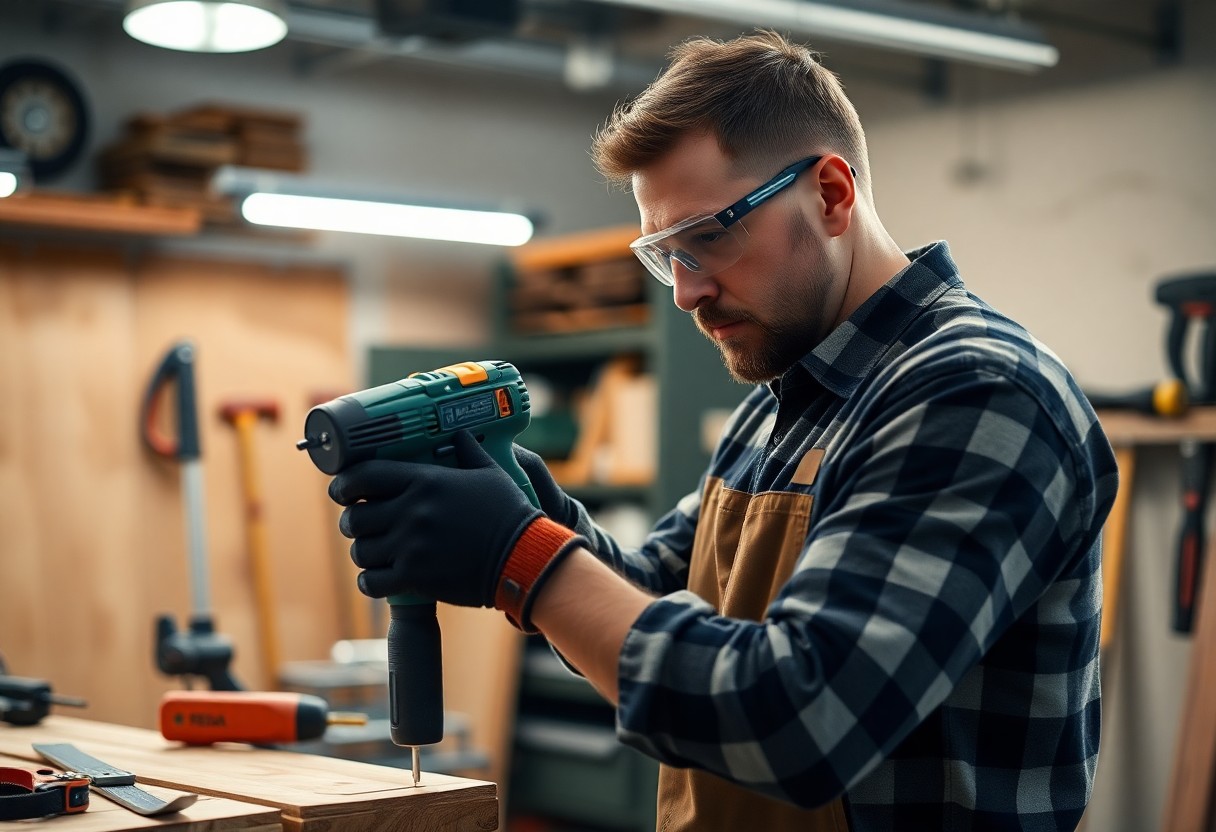Most individuals launch on DIY home projects with excitement and enthusiasm, but it is vital to prioritize safety when using tools. Understanding how to use tools properly can ensure not only the success of your project but also your own well-being. Here’s a guide to help you navigate your DIY journey safely.
First and foremost, it is vital to equip yourself with the right personal protective equipment (PPE). No matter how minor you believe the task to be, wearing appropriate gear such as safety goggles, ear protection, and gloves is a non-negotiable practice. This gear protects your eyes from flying debris, your ears from loud noises, and your hands from sharp edges and hazardous materials.
Next, familiarize yourself with the tools you plan to use. Read the instruction manual that comes with a new tool or revisit the operational guidelines of any familiar equipment. Each tool has its unique features and safety precautions, and knowing how to operate them correctly can help prevent accidents. If you’re unsure how to use a specific tool, consider watching tutorial videos or seeking advice from experienced DIYers.
Additionally, while working on your project, maintain a clean and organized workspace. Clutter can lead to trips and falls, which are common accidents in home improvement activities. By keeping your tools in designated spots and ensuring that materials are appropriately stored, you foster a safer environment for yourself and anyone else who may be nearby.
When handling electric tools, make sure to inspect the cords and plugs before you start your work. Look for any signs of wear or damage, which can cause electrical shocks. Always unplug your tools when changing accessories or performing maintenance. Utilizing tools with the appropriate power ratings for the materials you are working with can also minimize risks.
If you are using tools that create dust or emit fumes, prioritize ventilation. Use the necessary protective masks and ensure your workspace is well-ventilated to diminish exposure to potentially harmful particles and vapors. If possible, work outdoors or near open windows. Your health should always come first.
Being aware of your surroundings is another key aspect of safety. Ensure that the area where you work is reasonably clear of distractions, and avoid working while under the influence of drugs or alcohol. It’s equally important to keep children and pets away from your workspace, as they may inadvertently interfere with your project or get injured.
Lastly, trust your instincts. If you feel uncomfortable or unsure about a particular task, step back and reassess. It’s always better to pause and evaluate the situation than to rush into potentially hazardous circumstances. Consulting with someone more experienced or seeking professional help is a wise decision when faced with a challenging project.
By integrating these safety measures into your DIY home projects, you not only enhance your protection but also maximize your enjoyment. Stay safe, and happy crafting!
You need to prioritize safety as you begin on your DIY home projects. Whether you are painting a room, building a shelf, or tackling more complex renovations, using tools safely can prevent accidents and injuries. Below are some key safety tips that you should always consider when working with your tools.
First and foremost, you should always wear appropriate personal protective equipment (PPE). This includes gloves, goggles, and dust masks. Your eyes and hands are especially vulnerable to injuries, and protecting them should be a top priority. Safety goggles will shield your eyes from flying debris, while gloves will protect your hands from cuts and abrasions. If you’re working with power tools that produce dust, wearing a mask is important to avoid inhalation of harmful particles.
Before you even pick up a tool, make sure that your workspace is safe and organized. Keep your working area clutter-free, as a clean space reduces the risk of tripping hazards and allows you to work more efficiently. Ensure that you have sufficient lighting to clearly see your project and tools. Poor lighting can lead to mistakes or accidents, so consider using additional lamps if necessary.
When using hand tools, you should always follow proper techniques. This includes gripping the tools correctly and using them for their intended purpose. Misusing a tool can lead to serious injuries, so take the time to familiarize yourself with how each tool works. Additionally, keep your tools sharp and well-maintained; dull blades can slip and cause injuries.
If you are using power tools, it’s vital that you understand how they operate. Read the manufacturer’s instructions before use, and ensure that you fully comprehend how to operate the tool safely. Always use the right tool for the job; using a tool incorrectly can lead to dangerous situations. Plug in and turn on your power tools only when you are ready to use them, and never leave tools plugged in when they are not in use.
While working on your projects, keep distractions to a minimum. Turn off your phone, and focus completely on the task at hand. Engaging with friends or family while using tools can lead to accidents, so give yourself the time and space to concentrate. If you’re feeling fatigued or rushed, it’s better to take a break than risk an injury.
Lastly, don’t hesitate to ask for help if you are unsure about a task or tool. Consult someone with experience to guide you through the process, or watch tutorial videos that demonstrate safe tool usage. Engaging in DIY home projects can be incredibly rewarding, but maintaining safety should never be compromised.
By following these guidelines and being mindful of safety when working with tools, you can enjoy your DIY projects without unnecessary risks. As you develop your skills and tackle more challenging tasks, let safety be your first rule. Your health and well-being are irreplaceable—not just today, but for all your future creative endeavors.

Leave a Reply